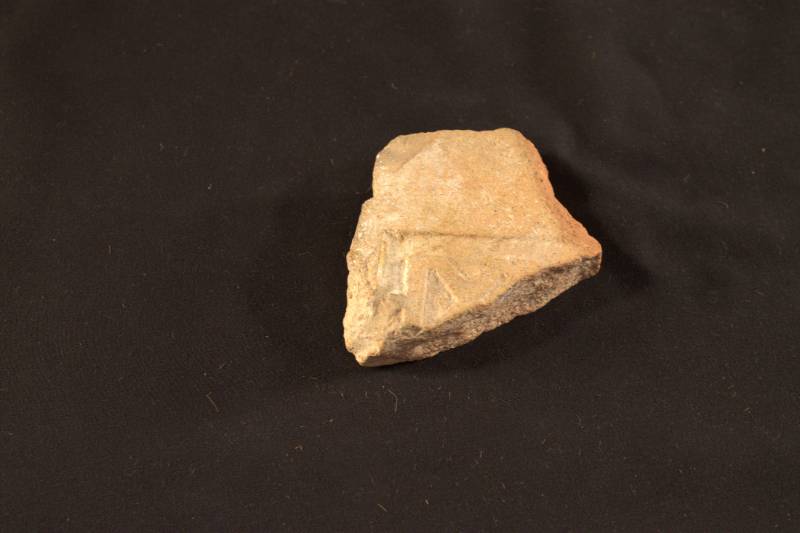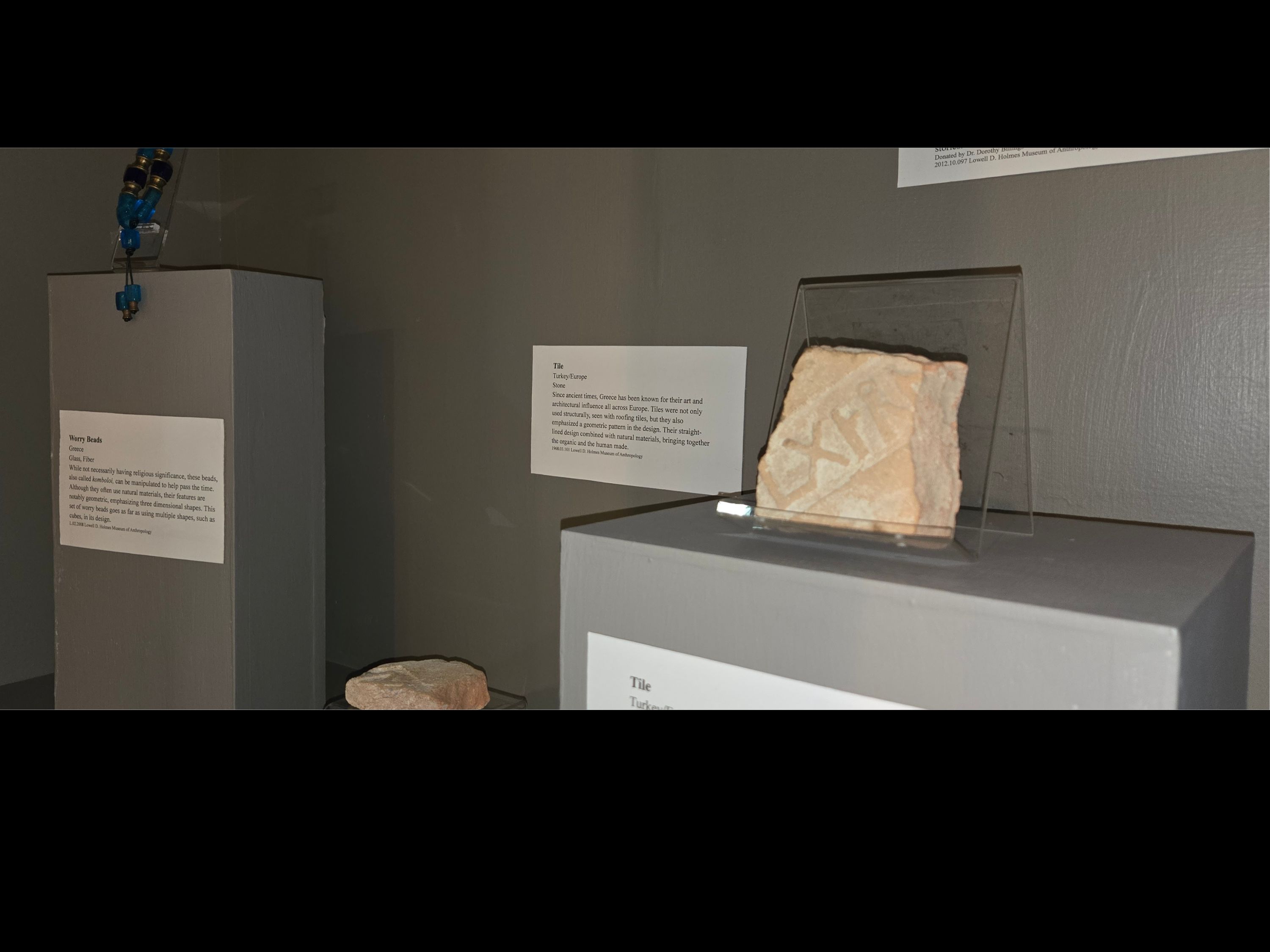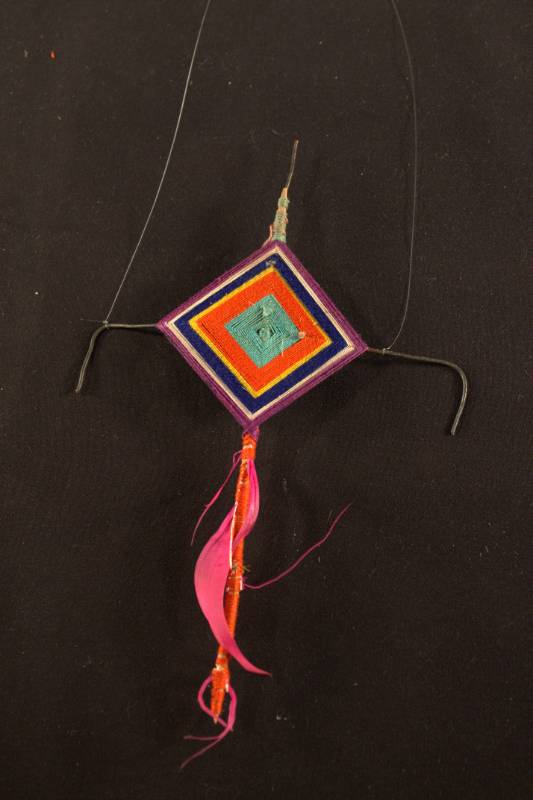Repeating Patterns
Cultural Continuity
Culture is the customs, arts, social institutions, and achievements of a particular nation, people, or other social group. In order for a culture to persist, there are certain things that remain relatively constant over time. Not only do patterns create culture, but culture often creates patterns as well. Items in this case represent artistic and social patterns seen in two very different societies.
- What patterns stand out to you?
- What patterns can you identify in your own culture?
Tile
Turkey/Europe
Stone
While globalization has exacerbated it, there has been movement across continents over millennia, especially with different peoples conquering and trading with one another. As this occurs, there is a cultural exchange. Tiles were common pieces of architecture and artwork, seen in various cultures, so it is not uncommon for them to appear elsewhere. This broken tile depicts Greek writing or numerals on it.
1968.03.100 Lowell D. Holmes Museum of Anthropology

Tile
Turkey/Europe
Stone
Since ancient times, Greece has been known for their art and architectural influence all across Europe. Tiles were not only used structurally, seen with roofing tiles, but they also emphasized a geometric pattern in the design. Their straight-lined design combined with natural materials, bringing together the organic and the human made.
1968.03.101 Lowell D. Holmes Museum of Anthropology
Worry Beads
Greece
Glass, Fiber
While not necessarily having religious significance, these beads, also called komboloi, can be manipulated to help pass the time. Although they often use natural materials, their features are notably geometric, emphasizing three dimensional shapes. This set of worry beads goes as far as using multiple shapes, such as cubes, in its design.
L.02.2008 Lowell D. Holmes Museum of Anthropology
Ornamental Headpiece
Lavongai (New Hanover)
Fabric and Metal
The islands of Papua New Guinea are incredibly diverse and contain over 1,000 cultural groups. Several of these groups participate in celebratory events called Sing Sings. A longstanding tradition of Sing Sings is to tell centuries old stories in dance. During these dances, costumes and ornaments are worn to denote the roles of dancers in these traditional stories.
Donated by Dr. Dorothy Billings
2012.10.097 Lowell D. Holmes Museum of Anthropology



